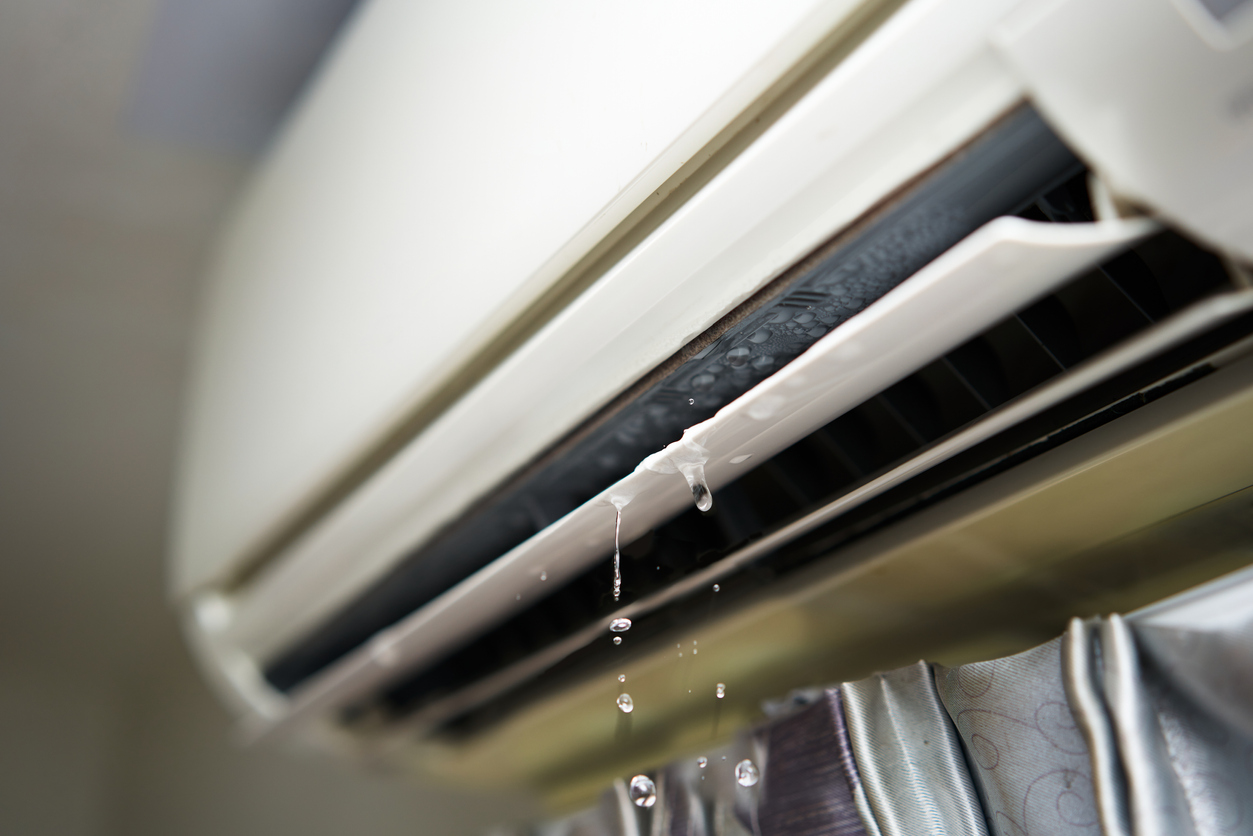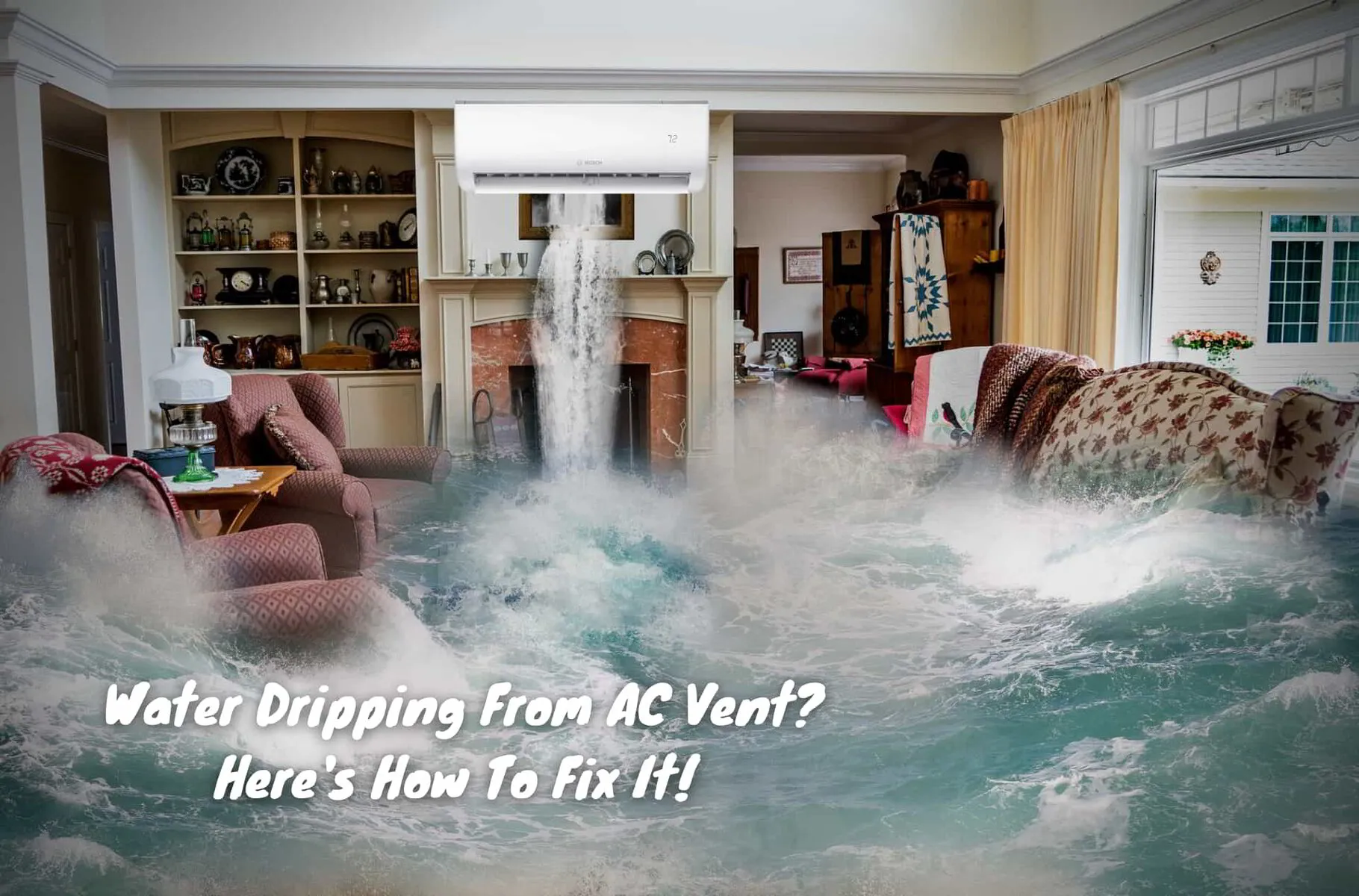Air Conditioner Dripping Water From Vent

Discovering water dripping from your air conditioner vent is a common yet concerning issue. It's not just a nuisance; it can signal underlying problems with your AC system that, if left unaddressed, could lead to costly repairs and even health hazards like mold growth. This guide will walk you through the potential causes of this dripping, how to troubleshoot them, and when it's time to call a professional.
Understanding the Basics of Air Conditioner Condensation
Air conditioners work by cooling the air that passes over a set of cold coils. This process causes moisture in the air to condense, much like how a cold glass of water "sweats" on a humid day. This condensation is collected in a drip pan and then drained away through a drain line. Problems arise when this system is disrupted.
Why is Condensation Normal?
Condensation is a natural byproduct of the cooling process. The amount of condensation produced depends on several factors, including the humidity level in your home, the temperature setting on your thermostat, and the overall efficiency of your AC unit. In humid environments, you'll naturally see more condensation.
When Does Condensation Become a Problem?
When the amount of condensation exceeds the system's ability to drain it away, or when the drainage system becomes blocked, water can overflow and find its way out of the vents. This is when you start to see the dripping, which indicates a potential problem requiring attention.
Common Causes of Dripping Water From AC Vents
Several factors can contribute to water dripping from your AC vents. Let's explore the most common causes:
1. Clogged Condensate Drain Line
This is the most frequent culprit. The condensate drain line is a pipe that carries the collected condensation away from the AC unit. Over time, algae, mold, dust, and other debris can accumulate inside this line, creating a blockage. Think of it like a clogged drain in your sink – the water has nowhere to go, so it backs up and overflows. This overflow can then lead to water dripping from the vents.
2. Frozen Evaporator Coils
Your AC's evaporator coils are responsible for cooling the air. When these coils become excessively cold, moisture can freeze on their surface. As the ice melts, it can overwhelm the drip pan and cause water to leak. Several factors can cause frozen coils:
- Low Refrigerant Levels: Think of refrigerant as the "blood" of your AC system, carrying heat from inside to outside. Low levels reduce the coil's ability to absorb heat properly, leading to freezing.
- Restricted Airflow: Dirty air filters, blocked vents, or a malfunctioning blower fan can restrict airflow over the coils, causing them to become too cold.
- Mechanical Issues: A faulty compressor or other mechanical problems can also contribute to coil freezing.
3. Damaged or Rusted Drip Pan
The drip pan is designed to collect the condensation from the evaporator coils. Over time, especially in humid environments, this pan can rust, crack, or otherwise become damaged. A compromised drip pan will leak, causing water to drip from the unit and potentially travel to the vents.
4. Improper Installation
If your AC unit was not installed correctly, the drip pan may not be properly aligned, or the drain line may not have the correct slope. This can lead to water accumulating in the wrong places and eventually dripping from the vents. Improperly sealed ductwork can also contribute by allowing humid air to infiltrate and condense.
5. High Humidity Levels
Extremely high humidity can overwhelm even a properly functioning AC system. The unit may simply be unable to keep up with the amount of moisture in the air, leading to excessive condensation and potential leaks. While the AC is working as intended, the environmental conditions are creating an excess of moisture. This often presents with poor cooling along with dripping.
6. Leaking Ductwork
Leaky ductwork in unconditioned spaces (like attics or crawl spaces) can allow warm, humid air to come into contact with the cold duct surfaces. This causes condensation on the outside of the ducts, which can then drip onto the ceiling and eventually show up as water stains near the vents. While the AC itself may be functioning normally, the ductwork is the point of failure.
Troubleshooting the Dripping Water
Before calling a professional, there are a few things you can try to troubleshoot the issue yourself:
1. Check and Clean the Air Filter
A dirty air filter is one of the most common causes of restricted airflow and frozen evaporator coils. Replace the filter regularly, typically every 1-3 months, depending on usage and air quality.
2. Inspect the Condensate Drain Line
Locate the condensate drain line, usually a PVC pipe exiting the indoor unit. You can try clearing it using a wet/dry vacuum to suck out any clogs. Alternatively, you can use a stiff wire or a specialized drain line cleaner to break up any blockage. Be careful not to damage the pipe.
3. Check the Drip Pan
Inspect the drip pan for signs of rust, cracks, or damage. If the pan is damaged, it will need to be replaced. This is a relatively inexpensive repair that can prevent further leaks.
4. Ensure Vents Are Open and Unblocked
Make sure that all supply and return vents are open and unobstructed. Closed or blocked vents can restrict airflow and contribute to frozen coils.
5. Thaw Frozen Coils (If Applicable)
If you suspect frozen coils, turn off the AC unit and allow the ice to melt completely. This can take several hours. Once the ice is melted, try running the AC with the fan only to further dry the coils. After this, address the underlying cause of the freezing (e.g., clean the air filter, check refrigerant levels).
When to Call a Professional
While some issues can be resolved with simple troubleshooting, others require the expertise of a qualified HVAC technician. Here are situations where you should call a professional:
- Low Refrigerant Levels: Refrigerant leaks require specialized equipment and knowledge to repair. Adding refrigerant yourself is not recommended and can be dangerous.
- Damaged Compressor or Other Mechanical Issues: These issues require specialized diagnostic tools and repair skills.
- Persistent Clogs: If you are unable to clear the condensate drain line yourself, or if the clog keeps recurring, a professional can use more advanced techniques to clear the blockage and identify any underlying problems.
- Suspect Improper Installation: If you suspect that your AC unit was not installed correctly, a professional can assess the installation and make any necessary corrections.
- Mold Growth: If you suspect mold growth due to the water leak, it's important to have it professionally assessed and remediated. Mold can pose serious health risks.
- You're Not Comfortable Working With Electrical Components: Air conditioning units involve electrical components that can be dangerous if not handled properly. If you're not comfortable working with electricity, it's always best to call a professional.
- If The Problem Persists: If you have tried the troubleshooting steps above and the water is still dripping, it's time to call for professional help. Continuing to run the system with the problem could make things worse.
Preventing Future Problems
Proactive maintenance can help prevent water from dripping from your AC vents and keep your system running efficiently:
- Regular Air Filter Changes: This is the most important preventative measure.
- Annual AC Tune-Ups: Schedule annual maintenance with a qualified HVAC technician. They can inspect the system, clean the coils, check refrigerant levels, and identify any potential problems before they become major issues.
- Clear Debris Around the Outdoor Unit: Keep the area around the outdoor unit free of leaves, grass clippings, and other debris to ensure proper airflow.
- Consider a Dehumidifier: In extremely humid environments, a dehumidifier can help reduce the amount of moisture in the air, reducing the strain on your AC system.
- Insulate Ductwork: Ensure your ductwork is properly insulated, especially in unconditioned spaces. This helps prevent condensation from forming on the outside of the ducts.
The Bottom Line
Water dripping from your AC vent is a sign that something isn't right. By understanding the potential causes, troubleshooting the issue, and knowing when to call a professional, you can address the problem effectively and prevent further damage to your home. Regular maintenance and proactive prevention are key to keeping your AC system running smoothly and efficiently for years to come.










